“If I don’t practice the way I should, I won’t play the way that I know I can.” ~ Ivan Lendl, professional tennis player and coach.
When I wrote my book, Six-Word Lessons for Exceptional Music Lessons – 100 lessons to Enhance the Parent, Student and Teacher Relationship, I found myself wanting to write so many tips on good practice. In fact, I ended up with two full chapters, twenty-two lessons, just on practice tips! It seems like a no-brainer that good practice would lead to progress, but I think we are just not always sure what “good practice” looks like.
I’ve been using some of the same techniques that I have been using for years, somewhat successfully. My last blog post on “repetitive practice” made a huge impact on the progress made by my students when I instituted it on a more consistent basis several years ago. But it began to feel like, to me, that it was suddenly not working as well as I wanted it to work.
Being a student of psychology, I am always interested in human behavior and why some things work and some things don’t. Research on learning and memory is fascinating and fluid. As I read different definitions of techniques for learning, I realized that, as an independent music teacher, I was practicing some of these techniques but didn’t know they had special names! So, with the concept of repetitive practice from the previous blog tucked under our belts, let’s move on to how we can define “good practice” even further.
When I wrote my book, Six-Word Lessons for Exceptional Music Lessons – 100 lessons to Enhance the Parent, Student and Teacher Relationship, I found myself wanting to write so many tips on good practice. In fact, I ended up with two full chapters, twenty-two lessons, just on practice tips! It seems like a no-brainer that good practice would lead to progress, but I think we are just not always sure what “good practice” looks like.
I’ve been using some of the same techniques that I have been using for years, somewhat successfully. My last blog post on “repetitive practice” made a huge impact on the progress made by my students when I instituted it on a more consistent basis several years ago. But it began to feel like, to me, that it was suddenly not working as well as I wanted it to work.
Being a student of psychology, I am always interested in human behavior and why some things work and some things don’t. Research on learning and memory is fascinating and fluid. As I read different definitions of techniques for learning, I realized that, as an independent music teacher, I was practicing some of these techniques but didn’t know they had special names! So, with the concept of repetitive practice from the previous blog tucked under our belts, let’s move on to how we can define “good practice” even further.

Remember when you were in high school and/or college and spent some sleepless nights cramming for an exam? In the short term, it worked! We got a good grade. But it didn’t last. I sure can’t tell you much about algebra, but I do know I passed the class. The crammed information for an exam quite literally leaves the working memory to leave room for more. I only invested in passing the test; I did not invest in learning. (Don’t calculators do all that work for me anyway?)
When it comes to learning a piece of music and, at some point, having it memorized, we cannot cram. We can put our efforts into repetitive practice, but if we do all of that repetitive practice the days before adjudications we may do well on adjudication day and then simply forget the piece. You know what I’m talking about. You take a difficult passage of music, practice it over and over and over until you have it “perfect,” but then the next day your progress is gone. “I played it better at home” is a great example of this. Your student probably did play it better at home, three times in a row like you asked, but that was two days ago, and practiced passively at that. Let’s look into this a little deeper because there is a better way.
Spaced Repetition Practice
Spaced repetition is a "learning technique that incorporates increasing intervals of time between subsequent review of previously learned material in order to exploit the psychological spacing effect." (Wikipedia)
In layman’s language for a music student – spacing thoughtful, repetitive practice. One of the oldest and most secure findings on learning and memory is that if you want to remember something, you should use spaced repetition. So how does it work? First we need to address the difference between working memory and long-term memory.
Working memory is a cognitive memory buffer with a limited capacity that is responsible for the transient holding, processing, and manipulation of information. (Wikipedia) Again, in laymen’s terms, it’s the memory function where things are in a holding pattern, waiting to be told where to go, what to do. Most people can only hold about seven items in working memory. (Miller, George A. The Magic Number Seven, Plus or Minus Two: Some Limits on our Capacity for Processing Information.)
Researchers in the field of teaching and learning have found that to take something you’ve learned and make it into long-term memory, you need to practice recalling that thing from long-term memory. So how do we get our practice out of working memory and into long-term memory? Spaced repetition.
“In a spaced repetition approach, your goal is to review material just before you would forget it, so you’re practicing the skill of long-term recall the best you can.” (pianopracticeassistant.com/spaced-repetition) Not a lot of research has been done for the learning and retaining of music, but the general concepts can be used by musicians aspiring to better performances.
When it comes to learning a piece of music and, at some point, having it memorized, we cannot cram. We can put our efforts into repetitive practice, but if we do all of that repetitive practice the days before adjudications we may do well on adjudication day and then simply forget the piece. You know what I’m talking about. You take a difficult passage of music, practice it over and over and over until you have it “perfect,” but then the next day your progress is gone. “I played it better at home” is a great example of this. Your student probably did play it better at home, three times in a row like you asked, but that was two days ago, and practiced passively at that. Let’s look into this a little deeper because there is a better way.
Spaced Repetition Practice
Spaced repetition is a "learning technique that incorporates increasing intervals of time between subsequent review of previously learned material in order to exploit the psychological spacing effect." (Wikipedia)
In layman’s language for a music student – spacing thoughtful, repetitive practice. One of the oldest and most secure findings on learning and memory is that if you want to remember something, you should use spaced repetition. So how does it work? First we need to address the difference between working memory and long-term memory.
Working memory is a cognitive memory buffer with a limited capacity that is responsible for the transient holding, processing, and manipulation of information. (Wikipedia) Again, in laymen’s terms, it’s the memory function where things are in a holding pattern, waiting to be told where to go, what to do. Most people can only hold about seven items in working memory. (Miller, George A. The Magic Number Seven, Plus or Minus Two: Some Limits on our Capacity for Processing Information.)
Researchers in the field of teaching and learning have found that to take something you’ve learned and make it into long-term memory, you need to practice recalling that thing from long-term memory. So how do we get our practice out of working memory and into long-term memory? Spaced repetition.
“In a spaced repetition approach, your goal is to review material just before you would forget it, so you’re practicing the skill of long-term recall the best you can.” (pianopracticeassistant.com/spaced-repetition) Not a lot of research has been done for the learning and retaining of music, but the general concepts can be used by musicians aspiring to better performances.
Interleaved Practice
Another term, closely related to spaced repetition, is interleaved practice. I’ve been doing this with my students for quite some time, but I didn’t know it had a fancy name! It’s basically spaced repetition with the twist of randomizing the passages you are working on. Putting different passages to recall in between the repeated passage you’ve been working on, you are forcing the relevant knowledge out of the working memory. Remember, the working memory can only hold so much, so something will get bumped. What you want to get bumped is the passage you’ve spaced in repetitive practice. You want it to go into long-term memory. By forcing yourself to recall things at random, you build stronger connections. Here's an example from a classroom setting:
Another term, closely related to spaced repetition, is interleaved practice. I’ve been doing this with my students for quite some time, but I didn’t know it had a fancy name! It’s basically spaced repetition with the twist of randomizing the passages you are working on. Putting different passages to recall in between the repeated passage you’ve been working on, you are forcing the relevant knowledge out of the working memory. Remember, the working memory can only hold so much, so something will get bumped. What you want to get bumped is the passage you’ve spaced in repetitive practice. You want it to go into long-term memory. By forcing yourself to recall things at random, you build stronger connections. Here's an example from a classroom setting:
Deliberate Practice
One more definition and we’ll move on. Deliberate practice actively and continuously is the practice of reflecting on and correcting one’s performance. Effective practice requires mindful engagement and conscious self-observation. This is how I’ve been saying it to students for many, many years: “I’m not at your house when you practice so you need to be your own teacher.” This is why having a piano teacher instead of being self-taught is so helpful. Teachers engage fully in the task of listening. We hear the mistakes and we stop and talk about how to correct the mistakes. We are not just teaching notes, fingering, counts, and dynamics. We, by our example, are showing students how to engage more in their practice time. The opposite of deliberate practice is the example I used in the previous blog (Repetition is the Mother of All Learning) where my student played through a piece and moved on to the next assignment. The opposite of deliberate practice can also be the “effortless enjoyment,” or slipping into the “flow state.” This is often where we continue practicing the same mistakes over and over until we have perfected them! It’s tricky though.
One more definition and we’ll move on. Deliberate practice actively and continuously is the practice of reflecting on and correcting one’s performance. Effective practice requires mindful engagement and conscious self-observation. This is how I’ve been saying it to students for many, many years: “I’m not at your house when you practice so you need to be your own teacher.” This is why having a piano teacher instead of being self-taught is so helpful. Teachers engage fully in the task of listening. We hear the mistakes and we stop and talk about how to correct the mistakes. We are not just teaching notes, fingering, counts, and dynamics. We, by our example, are showing students how to engage more in their practice time. The opposite of deliberate practice is the example I used in the previous blog (Repetition is the Mother of All Learning) where my student played through a piece and moved on to the next assignment. The opposite of deliberate practice can also be the “effortless enjoyment,” or slipping into the “flow state.” This is often where we continue practicing the same mistakes over and over until we have perfected them! It’s tricky though.
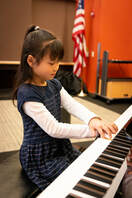
Effortless enjoyment is important for keeping up motivation and preventing burnout (mine and the student’s), but it’s like a state of diffused attention. From Dr. Cal Newport’s blog entry Flow is the Opiate of the Mediocre:
Avoid Flow. Do What Does Not Come Easy. “The mistake most weak pianists make is playing, not practicing. If you walk into a music hall at a local university, you’ll hear people ‘playing’ by running through their pieces. This is a huge mistake. Strong pianists drill the most difficult parts of their music, rarely, if ever playing through their pieces in entirety.”
(http://calnewport.com/blog/2011/12/23/flow-is-the-opiate-of-the-medicore-advice-on-getting-better-from-an-accomplished-piano-player/)
Research tells us nearly unanimously that it’s the amount of quality (deliberate) practice, not natural born talent and skills or the number of hours mindlessly practicing, that matters most in developing expertise.
All of this – spaced repetition, interleaved practice, and deliberate practice – takes effort on the part of the teacher as well as the student. It takes the setting of goals, analyzing the music to be able to break it down into workable passages, and setting a schedule. Goal-directed practice and targeted, timely feedback is a must.
Avoid Flow. Do What Does Not Come Easy. “The mistake most weak pianists make is playing, not practicing. If you walk into a music hall at a local university, you’ll hear people ‘playing’ by running through their pieces. This is a huge mistake. Strong pianists drill the most difficult parts of their music, rarely, if ever playing through their pieces in entirety.”
(http://calnewport.com/blog/2011/12/23/flow-is-the-opiate-of-the-medicore-advice-on-getting-better-from-an-accomplished-piano-player/)
Research tells us nearly unanimously that it’s the amount of quality (deliberate) practice, not natural born talent and skills or the number of hours mindlessly practicing, that matters most in developing expertise.
All of this – spaced repetition, interleaved practice, and deliberate practice – takes effort on the part of the teacher as well as the student. It takes the setting of goals, analyzing the music to be able to break it down into workable passages, and setting a schedule. Goal-directed practice and targeted, timely feedback is a must.
- Set specific goals. The goal to “practice better” or “practice more” will likely not work. It’s better to be very specific, such as, “I want to do the phrasing in section A correctly, at allegro tempo, without stumbling.”
- Continue to refine your goals. Once you have achieved the goal listed in #1, set another specific goal such as, “I want to produce a sotto voce sound using dynamics and touch when I perform section A.
Now, let’s see if we can look at an example in a real-life situation. I have a student, we’ll call her Christy, who is preparing for a future adjudicated opportunity. She will be performing two selections in the piano solo event and one piano concerto. She will also be taking a theory test.
The first thing Christy and I will do (after she freaks out over the amount of work this looks like it’s going to take to learn and memorize!) is to divide each piece into small sections that she can work on. We will make them small enough so that she can see some progress in a minute or two of practice time. I would not expect her to learn all of these pieces starting at the same time, but I would definitely begin with the hardest one first. So, let’s take a look at the concerto. I would likely assign her the first four measures, hands separate to learn (especially that bass pattern), and then put the hands together, slowly at first. This might be what would appear in her assignment notebook with the way I do things currently:
Mozart concerto – learn and practice m. 1 – 4 (leaving out the last 1.5 beats of m. 4)
Practice hands separate – RH 2x/day, LH 3x/day - slow to start to catch problem areas
Put hands together and build up speed.
As teachers, we have to remember to tailor the goals and assignments for each individual student. Their learning capabilities are unique. This is just what I would do for Christy. To that assignment I might also have Christy start on one of her piano solo pieces. I usually go for a piece that is completely different from the other one she is working on, so let’s figure out an assignment for Journey in the Night.
Journey in the Night – learn and practice the first 8 measures of the first page, LH only. Work out the fingerings in those runs; write them in if necessary. Make sure you count as you are practicing. Do this LH practice 3x/day, carefully. Try playing it as fast as you can after it’s learned. Play it on different octaves of the keyboard.
To this piano practice assignment, I might add one thing to work on in preparation for the theory test.
I expect Christy to practice for 45-minutes a day, but sometimes that is just not possible for her. She is in high school and is involved in school leadership and on the tennis team. She has a tendency to either not practice when her schedule is full, or more than likely, she will practice the day before her lesson and usually only practice one assignment.
The two sections within the two pieces are probably enough for her already overloaded working memory. The direction I would give her using the concepts of spaced repetition and interleaving would be as follows. Remember, breaking up your practice in this way has the additional benefit of keeping focused attention on goal-directed skill building.
Day 1: Practice m.1-4 of the concerto. Start practice hands separately to think about what you are practicing.
Practice LH 3x; practice RH 2x. How is it counted? What are the dynamics?
Practice hands together 5x. Where are the problem areas? Practice those areas 5x more.
Day 2: Practice the first 8 measures of Journey in the Night, LH only. Figure out your fingerings & counts.
Practice this 5x slowly.
Day 3: Practice the concerto passage with the metronome for steady beat, 5x
LH practice of Journey in the Night, 2x/very fast; 2x/very soft
Day 4: Christy won’t practice this day because she is at school until 8:00 pm and then will have homework
to do.
Day 5: Practice any section of Journey in the Night that you want to. Practice it 3x
Practice LH Journey, 3x
Practice concerto passage with correct tempo and dynamics. 5x
Day 6: Practice the last 4 measures of the concerto. Go through it 3x
Practice the original concerto passage, w/metronome, checking yourself. 3x
Practice LH Journey, first 8 measures, up to tempo, 5x
Day 7: No practice as Christy will come right to lessons from school.
If I understand the definitions of spaced repetition, interleaving, and deliberate practice, I think I covered it all in this sample practice assignment. Ultimately, wouldn’t it be great if students would just be smart enough to do this on their own? Some of my past students who have gone on to do wonderful things with their piano performances have done this on their own. But let’s face it, most of our students really do need our guidance. We also know that the above example of an assignment for a week might not happen once the student leaves the studio. We can only do what we can do, and that’s to do our job to the best of our ability.
** After I first wrote this blog post and before I posted it, I tried an abbreviated format of this technique for practice with one of my 4th grade students, on just one of his pieces. I asked him about it at his next lesson and he said he felt like he had an easier time and an easier time remembering what he had practiced from the day before!
Mozart concerto – learn and practice m. 1 – 4 (leaving out the last 1.5 beats of m. 4)
Practice hands separate – RH 2x/day, LH 3x/day - slow to start to catch problem areas
Put hands together and build up speed.
As teachers, we have to remember to tailor the goals and assignments for each individual student. Their learning capabilities are unique. This is just what I would do for Christy. To that assignment I might also have Christy start on one of her piano solo pieces. I usually go for a piece that is completely different from the other one she is working on, so let’s figure out an assignment for Journey in the Night.
Journey in the Night – learn and practice the first 8 measures of the first page, LH only. Work out the fingerings in those runs; write them in if necessary. Make sure you count as you are practicing. Do this LH practice 3x/day, carefully. Try playing it as fast as you can after it’s learned. Play it on different octaves of the keyboard.
To this piano practice assignment, I might add one thing to work on in preparation for the theory test.
I expect Christy to practice for 45-minutes a day, but sometimes that is just not possible for her. She is in high school and is involved in school leadership and on the tennis team. She has a tendency to either not practice when her schedule is full, or more than likely, she will practice the day before her lesson and usually only practice one assignment.
The two sections within the two pieces are probably enough for her already overloaded working memory. The direction I would give her using the concepts of spaced repetition and interleaving would be as follows. Remember, breaking up your practice in this way has the additional benefit of keeping focused attention on goal-directed skill building.
Day 1: Practice m.1-4 of the concerto. Start practice hands separately to think about what you are practicing.
Practice LH 3x; practice RH 2x. How is it counted? What are the dynamics?
Practice hands together 5x. Where are the problem areas? Practice those areas 5x more.
Day 2: Practice the first 8 measures of Journey in the Night, LH only. Figure out your fingerings & counts.
Practice this 5x slowly.
Day 3: Practice the concerto passage with the metronome for steady beat, 5x
LH practice of Journey in the Night, 2x/very fast; 2x/very soft
Day 4: Christy won’t practice this day because she is at school until 8:00 pm and then will have homework
to do.
Day 5: Practice any section of Journey in the Night that you want to. Practice it 3x
Practice LH Journey, 3x
Practice concerto passage with correct tempo and dynamics. 5x
Day 6: Practice the last 4 measures of the concerto. Go through it 3x
Practice the original concerto passage, w/metronome, checking yourself. 3x
Practice LH Journey, first 8 measures, up to tempo, 5x
Day 7: No practice as Christy will come right to lessons from school.
If I understand the definitions of spaced repetition, interleaving, and deliberate practice, I think I covered it all in this sample practice assignment. Ultimately, wouldn’t it be great if students would just be smart enough to do this on their own? Some of my past students who have gone on to do wonderful things with their piano performances have done this on their own. But let’s face it, most of our students really do need our guidance. We also know that the above example of an assignment for a week might not happen once the student leaves the studio. We can only do what we can do, and that’s to do our job to the best of our ability.
** After I first wrote this blog post and before I posted it, I tried an abbreviated format of this technique for practice with one of my 4th grade students, on just one of his pieces. I asked him about it at his next lesson and he said he felt like he had an easier time and an easier time remembering what he had practiced from the day before!
I don’t break my student’s practice assignment down day by day, but I think I’m going to try it for the students that have real anxiety about learning a piece and getting it memorized. I probably wouldn’t break things down day-by-day for beginner students, but I would certainly still use the repetitive and interleaving techniques and lots of variety.
This won’t be easy to establish unless a teacher is already doing something akin to this kind of practice process. We have to remember that piano is more complicated than memorizing historical dates or how to divide fractions. After all, if you can only hold seven things in working memory, which seven do you choose? Individual notes, chords, phrases, dynamics, fingerings, etc.? Acquiring the skill of playing the piano is complex, but all this complexity means we have to be even more deliberate in applying these processes. Teachers do their work, students do their work, and the brain does its work. You’ll never know if it works for you or your students unless you try it!
This won’t be easy to establish unless a teacher is already doing something akin to this kind of practice process. We have to remember that piano is more complicated than memorizing historical dates or how to divide fractions. After all, if you can only hold seven things in working memory, which seven do you choose? Individual notes, chords, phrases, dynamics, fingerings, etc.? Acquiring the skill of playing the piano is complex, but all this complexity means we have to be even more deliberate in applying these processes. Teachers do their work, students do their work, and the brain does its work. You’ll never know if it works for you or your students unless you try it!

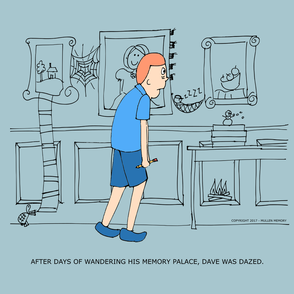
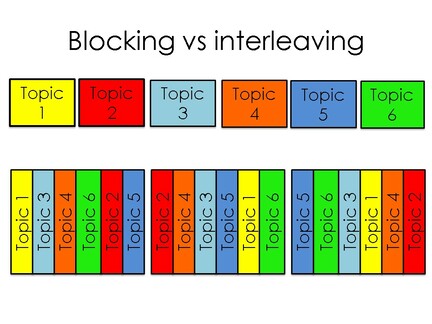
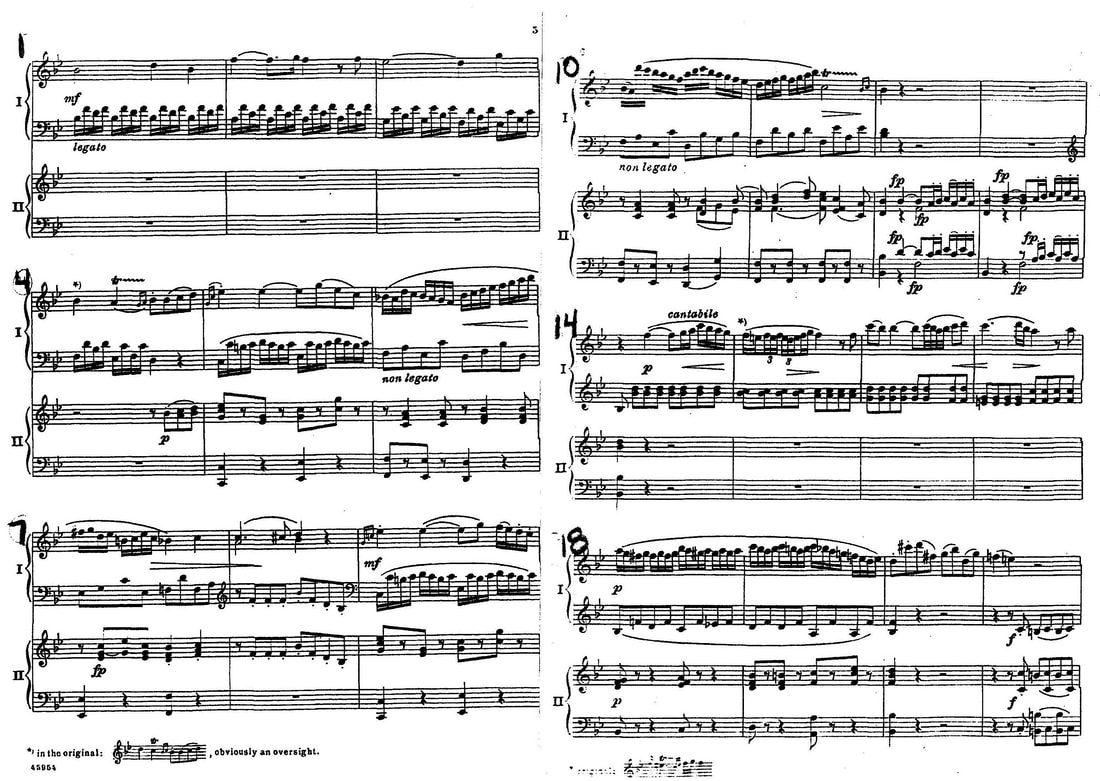
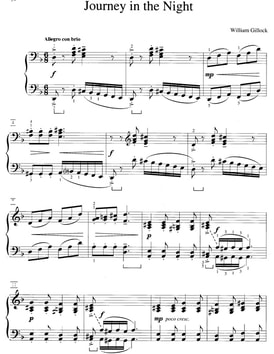
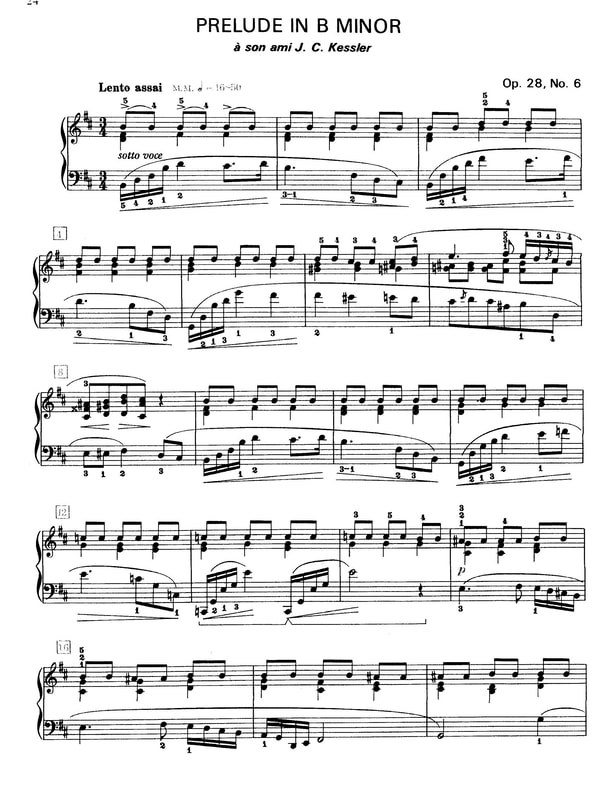
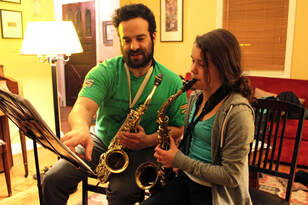
 RSS Feed
RSS Feed

